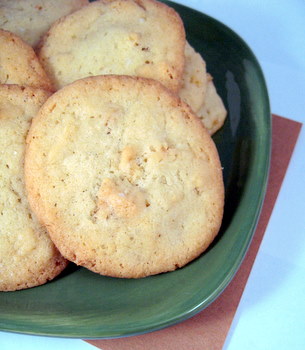The book Flatbreads & Flavors: A Baker’s Atlas is not a new cookbook, but it is new in paperback and its republication is bound to bring it back into the spotlight. It was first published back in 1995, and won a James Beard Foundation Award for Cookbook of the year in 1996. The book explores global cuisine through recipes for flatbreads. With or without yeast, these often simple breads are one of the oldest types of bread/food in the world and it’s amazing how many cultures have their own twists on them.
The book starts off by going over “flatbread basics,” discussing some of the similarities and differences between various types of flatbreads. The tone is extremely encouraging and is a great confidence booster for someone who is not experienced with bread, as well as a good reminder for all bakers that perfection isn’t the goal: learning, experimentation and (hopefully!) good-tasting results are. The intro also covers basic ingredients and techniques, before the book jumps into the recipes, which are divided up by global region.
Each recipe is accompanied by a description of either the history of the bread, the cuisine it come from or the technique utilized in making it. Sometimes, all three work their way in. The recipes are very detailed and really hold your hand through the mixing and baking process – which is a great feature in a book that offers recipes from cuisines you may never have tried cooking from. Another nice feature is that before the instructions are given, the authors note what equipment you’ll need/want to have on hand for properly making the recipe, whether it’s a mixing bowl, a rolling pin, a blender or a certain size baking pan. In addition to the recipes for bread, there are also a number of recipes for bread accompaniments, such as curries and salsas, as well as main dishes. It’s a nice touch (although I should mention that more than half the book is full of these “extras”) that means you’ll be able to create a whole meal around your bread.






Pamela M
September 15, 2008Hi, Nic.
Got a question for you… I’ve recently found myself nearly out of flour, and I was wondering what types of flour you usually keep in stock. Usually, I keep unbleached all-purpose and white whole wheat flour (usually KA brand) for my occasional home baking. Generally, I bake cookies and other sweet stuffs, but once in a blue moon attempt to bake bread. I was wondering if there is any advantage to specifically buying pastry flour, cake flour, and bread flour as opposed to just all-purpose.
** Pamela